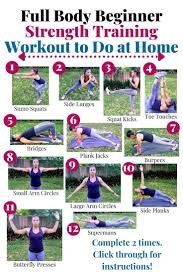Walk through any gym today, and you’ll witness a peculiar form of consumption. Bodies move through routines like products on an assembly line—reps counted, calories burned, selfies snapped. Fitness has become disposable: a 30-day shred, a 6-week transformation, a quick fix between life’s other demands. We treat our bodies like rental cars, pushing hard with little regard for longevity. But what if fitness isn’t something you consume? What if it’s something you craft? What if your body deserves the same patience, precision, and reverence as a master artisan’s finest work?
The Disposable Culture of Quick Fixes
Modern fitness operates like fast fashion—trendy, temporary, and ultimately unsatisfying. We’re sold programs promising rapid results: “Lose 10 pounds in 2 weeks!” “Get abs in 30 days!” These aren’t invitations to mastery; they’re invitations to burnout. The human body isn’t a microwave meal. It’s a complex ecosystem that adapts slowly, responds to consistency, and thrives on nuance.
Consider the psychological toll. When we chase quick fixes, we train ourselves to expect instant gratification. The moment results plateau (as they inevitably do), we abandon the program and jump to the next. This cycle creates what psychologists call “fitness whiplash”—a pattern of starting, stopping, and restarting that erodes both physical progress and mental resilience. Worse, it teaches us to view our bodies as projects to “fix” rather than lifelong companions to honor.
The Craftsman Mindset: Three Pillars of Mastery
True fitness craftsmanship rests on timeless principles borrowed from artisans who understand that mastery demands more than effort—it demands wisdom.
1. Patience Over Pace
A woodworker doesn’t rush a dovetail joint. A potter doesn’t fire clay before it’s ready. Yet in fitness, we celebrate speed: “Crush it!” “No days off!” “Go hard or go home!” This mentality ignores a fundamental truth: adaptation happens in recovery, not exertion. Your muscles grow when you rest. Your nervous system integrates skills during sleep. Your connective tissues strengthen gradually, like steel being tempered.
The craftsman understands that forcing progress creates weakness, not strength. They embrace:
- Deliberate Rest: Days off as non-negotiable as training days
- Progressive Overload: Adding weight, volume, or intensity only when the body signals readiness
- Seasonal Training: Periods of intensity balanced with phases of maintenance and exploration
2. Precision Over Power
Power without precision is wasted energy. A blacksmith doesn’t wildly swing a hammer; they strike with calculated force. In fitness, this means prioritizing movement quality over quantity. It’s the difference between jerking a weight up with momentum and controlling it through a full range of motion.
This precision manifests in:
- Technical Mastery: Learning movement patterns before adding load
- Body Awareness: Recognizing subtle feedback—muscle engagement, joint comfort, breathing rhythms
- Form First: Reducing weight or volume the moment technique degrades
Consider the kettlebell swing. Done poorly, it’s a lower-back disaster. Done well—with precision—it’s a symphony of power production, cardiovascular conditioning, and posterior chain development. The craftsman spends months perfecting the hinge pattern before ever adding significant weight.
3. Purpose Over Performance
Artisans create with intention. A chair isn’t just wood; it’s a place for rest, conversation, connection. Similarly, fitness isn’t just movement; it’s preparation for life. The craftsman asks: What am I training for? Not “What should I lift?” but “How do I want to live?”
This purpose-driven approach shifts focus from:
- Aesthetics to Function: Training for real-world capability—lifting groceries, playing with children, hiking mountains
- Short-Term Goals to Long-Term Vitality: Building a body that serves you at 80, not just looks good at 30
- External Validation to Internal Fulfillment: Finding joy in movement itself, not just results
The Hidden Costs of Disposable Fitness
1. The Injury Epidemic
Rushing progression and ignoring form has created a silent crisis. Orthopedic clinics report rising numbers of fitness-related injuries, particularly among younger adults. Shoulder impingements from poor overhead pressing. Lower-back strains from deadlifting beyond capability. Knee issues from improper squatting. These aren’t badges of honor; they’re preventable setbacks from treating the body like a machine rather than a living system.
2. The Motivation Rollercoaster
Quick fixes create motivation spikes followed by crashes. When the 30-day challenge ends, so does the drive. The craftsman, however, builds systems, not motivation. They cultivate intrinsic drivers: the satisfaction of progress, the joy of movement, the confidence in capability. These sustain practice for decades, not days.
3. The Disconnection Dilemma
Disposable fitness divorces us from our bodies. We push through pain signals, ignore fatigue, and treat discomfort as weakness. The craftsman listens deeply. They understand that discomfort is information—sometimes a signal to push, often a warning to ease. This dialogue creates profound body awareness that transcends physical training, enhancing overall well-being.
Becoming a Fitness Craftsman: Practical Steps
1. Audit Your Relationship with Fitness
Ask:
- Do I view rest as laziness or wisdom?
- Do I celebrate quick results or sustainable progress?
- Do I train for life’s demands or social media approval?
2. Embrace the Beginner’s Mind
Even advanced practitioners benefit from returning to fundamentals. Spend a month focusing solely on movement quality:
- Master bodyweight squats before adding weight
- Perfect push-up form before progressing to advanced variations
- Learn to brace your core before loading your spine
3. Implement “Skill Days”
Dedicate sessions to practicing movements without pressure. Treat them like an artist sketching—exploring, refining, enjoying the process. Work on:
- Balance (single-leg stands, yoga poses)
- Coordination (juggling, dance, agility drills)
- Body control (slow-motion reps, isometric holds)
4. Track Wisdom, Not Just Weight
Beyond lifts and reps, track:
- Recovery Quality: Sleep duration, energy levels, soreness
- Movement Joy: Which activities leave you feeling vibrant?
- Functional Gains: Can you carry groceries easier? Play longer without fatigue?
5. Find Your Movement Community
Craftsmen thrive in guilds. Seek communities that value:
- Process over performance
- Learning over showing off
- Longevity over intensity
Case Studies in Fitness Craftsmanship
The MovNat Practitioner
Sarah, a former gym rat, discovered MovNat—training based on natural human movement. She spends hours practicing crawling, balancing, climbing, and lifting awkward objects. At 45, she moves with more agility and confidence than at 25. Her “workouts” look like play but build real-world capability.
The Senior Strength Athlete
At 72, Robert deadlifts twice his bodyweight. He didn’t start lifting until 60. His secret? Precision and patience. He spent two years learning the hinge pattern with a broomstick before touching a barbell. Now, he mentors younger lifters on the art of sustainable strength.
The Yoga Craftsman
Maria has practiced Iyengar yoga for 30 years. Her sessions aren’t sweat-drenched workouts but meticulous explorations of alignment. She holds poses for minutes, refining micro-adjustments. At 68, she moves with grace many 20-year-olds envy.
The Future of Fitness: Craft Over Consumption
As technology floods the market with AI trainers, bio-hacking gadgets, and instant results, the value of craftsmanship will only grow. What machines can’t replicate is:
- Intuitive Listening: Knowing when to push and when to pause
- Contextual Wisdom: Adapting training to life’s seasons
- Purposeful Practice: Movement as expression, not just exercise
Your Invitation to Craftsmanship
Start small:
- Today: Perform one movement with obsessive attention to form. Feel every muscle engage.
- This Week: Replace one high-intensity session with a skill practice. Learn something new.
- This Month: Define your “why.” Not “lose weight” but “move without pain,” “keep up with my kids,” “age powerfully.”
Fitness isn’t a product to consume or a problem to solve. It’s a craft to hone—a lifelong dialogue between your body and your intentions. When you approach it as a craftsman, you’re not just building muscle or endurance. You’re building resilience, wisdom, and respect for the remarkable vessel that carries you through life.



